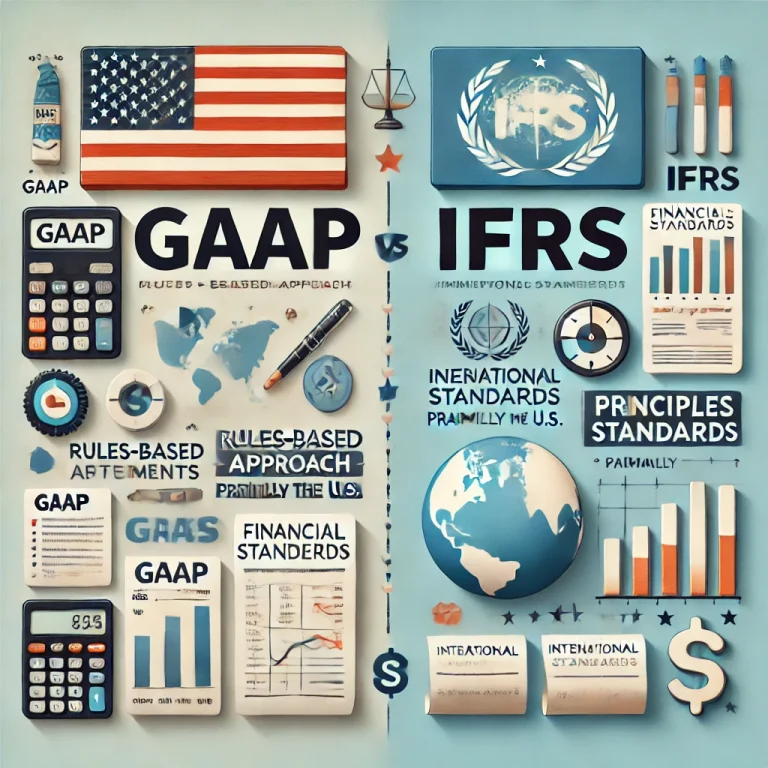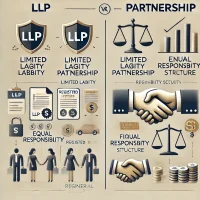When it comes to accounting issues, international companies depend on the comparison of a difference between the two very important topics called GAAP and IFRS. In essence, GAAP is short for Generally Accepted Accounting Principles primarily used in the United States, while IFRS stands for International Financial Reporting Standards used in more than 100 countries. Both seek to standardize financial reporting but differ dramatically in the principles, presentations, and requirements that could affect financial statement preparation and interpretation.
What is GAAP?
Generally accepted accounting principles, or GAAP, refer to the standard framework of guidelines used in the United States for financial reporting and accounting. The FASB, or Financial Accounting Standards Board, rules on different issues with regard to accounting, giving exact directives. Since it ensures consistency, reliability, and transparency in the issued financial statements, the resulting financial statements may easily compare with each other in terms of market comparability across the United States.
What is IFRS?
IFRS is the international standard account issued by the International Accounting Standards Board. IFRS accounts are principle-based accounting when compared with GAAP, meaning that such an account works on a broad guideline for flexibility rather than strict rules according to the judgment of professionals working in their field. Financial reporting aims at standardizing worldwide IFRS will enable firms and investors to comparatively easily understand of financial statements across boundaries.
Differences Between IFRS and GAAP Accounting
The main differences between IFRS accounting and GAAP are in the direction of approach; rules versus principles; and the treatment related to financial elements. We now discuss the following areas in which GAAP is different from IFRS:
Local vs Global Application
- GAAP: Primarily used in the United States, where it is the mandated accounting standard for publicly traded companies.
- IFRS: Adopted by more than 100 countries worldwide, including those in the European Union and many Asian and African nations, making it the dominant global standard.
This divergence impacts companies with cross-border operations that may need to prepare dual financial statements to comply with both systems.
Inventory Methods
- GAAP: Allows the use of both First-In, First-Out (FIFO) and Last-In, First-Out (LIFO) methods for inventory valuation.
- IFRS: Prohibits the LIFO method due to concerns about its potential distortion of inventory value and profitability. Only FIFO and weighted-average cost methods are permitted.
The restriction on LIFO under IFRS often affects international companies transitioning from GAAP, as they must adapt their inventory accounting policies.
Rules vs Principles
- GAAP: Follows a strict, rule-based approach, with detailed instructions on handling various accounting scenarios.
- IFRS: Uses a principles-based approach, which provides general guidelines but allows room for interpretation based on the specific context.
This difference can lead to variations in financial reporting, as GAAP’s prescriptive rules offer less flexibility compared to IFRS’s broader principles.
Inventory Write-Down Reversals
- GAAP: Once an inventory write-down has been recorded, it cannot be reversed, even if the asset’s value later recovers.
- IFRS: Allows inventory write-down reversals when the value of inventory increases in a subsequent period, limited to the extent of the original write-down.
This flexibility under IFRS can lead to differences in asset valuation and impact a company’s financial health portrayal over time.
Fair Value Revaluations
- GAAP: Does not permit the revaluation of property, plant, and equipment (PPE) or intangible assets to fair value after initial recognition, except for certain financial instruments.
- IFRS: Allows companies to revalue PPE and intangible assets to their fair value, provided that fair value can be reliably measured. This policy can make IFRS financial statements more reflective of current asset values.
Fair value revaluations under IFRS provide a more realistic representation of asset values in volatile markets, unlike the static approach of GAAP.
Intangible Assets
- GAAP: Costs associated with intangible assets like development expenses are usually expensed as they occur unless they meet strict criteria.
- IFRS: Allows the capitalization of development costs under certain conditions, which can be amortized over their useful lives.
The IFRS approach can impact net income, as capitalizing development costs spreads expenses over time, unlike GAAP’s immediate expense recognition.
Impairment Losses
- GAAP: Impairment is recognized when the carrying amount of an asset exceeds the sum of undiscounted future cash flows. Once recorded, impairment losses cannot be reversed.
- IFRS: Uses a one-step impairment test based on discounted future cash flows. Unlike GAAP, IFRS allows reversals of impairment losses, except for goodwill.
The flexibility in IFRS regarding impairment reversals can lead to lower expenses and improved asset values over time.
Fixed Assets
- GAAP: Requires companies to record fixed assets at historical cost, adjusted for depreciation.
- IFRS: Permits the revaluation of fixed assets to reflect fair value, making the statements more dynamic but potentially less consistent.
This difference affects balance sheet presentation, as IFRS statements may show more up-to-date valuations for fixed assets compared to GAAP.
In summary, the primary difference between GAAP and IFRS is that GAAP is considered a more rule-based system compared to IFRS, which is more principle-based. While making the financial statement stricter in its guidelines and, therefore, more predictable within the framework of the U.S. economy, IFRS is a flexible and widely accepted practice that might lead to subjectivity but facilitates cross-country comparison. These would include inventory valuation impacts, revaluation of fixed assets, and treatment of intangibles. All of these impact the financial reporting made by the business.
GAAP and IFRS FAQs
Why does the U.S. use GAAP instead of IFRS?
The U.S. uses GAAP because it is tailored to the unique regulatory and financial landscape of the country, with rules that provide specific guidelines for compliance within its markets.
Can a company use both GAAP and IFRS?
Multinational companies may need to report using both GAAP and IFRS for regulatory reasons in different jurisdictions. However, in the U.S., publicly traded companies are required to follow GAAP.
What are examples of IFRS-compliant countries?
Countries such as the United Kingdom, Canada, Australia, and many in the European Union have adopted IFRS as their accounting standard.
Which is better for investors: GAAP or IFRS?
Both have their advantages. GAAP’s rules provide detailed clarity, while IFRS offers a more realistic representation of assets and liabilities, making each useful depending on the investor’s preferences.
How does IFRS treat revaluation differently from GAAP?
IFRS allows the revaluation of certain assets to fair value, unlike GAAP, which only permits initial recognition at historical cost.


